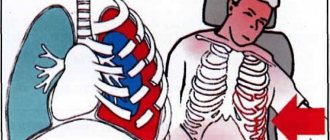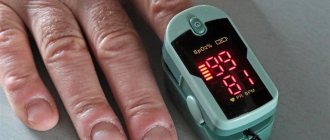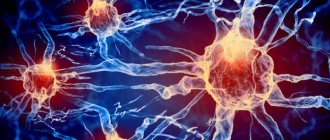Article for the “bio/mol/text” competition: AIDS is a disease of the immune system caused by the human immunodeficiency virus (HIV). With AIDS, a person slowly but surely (over several years) develops total immunodeficiency, when the body cannot cope with almost any microbes (even those that never infect a healthy person). Since the immune system fights not only microbes, but also cancer cells, a person with AIDS has a sharply increased chance of developing cancer. HIV uses sophisticated mechanisms to bypass and destroy our immune system, always going one step ahead of it.
The immune system
In order to understand how the human immunodeficiency virus (that’s what HIV stands for) destroys the immune system, you first need to understand what it is - the immune system. According to one of the definitions (according to R.V. Petrov), immunity is a way of protecting the body from living bodies and substances that carry signs of genetic foreignness. Simply put, immunity is what protects us from bacteria, viruses, any high-molecular foreign substances (remember immunity against snake venom) that enter the body, as well as cancer cells. It is based on phagocytes (called macrophages in animals), which actually destroy (absorb) foreign bodies, as well as T- and B-cells of the immune system, which carry out the precise “guiding” of phagocytes towards the pathogen. When a microbe enters the body, phagocytes absorb and digest it [29].
Primary enemy recognition occurs through Toll-like receptors, or TLRs [30]. These molecules recognize structures common to many classes of pathogens, but absent in humans (for example, TLR5 recognizes the protein flagellin, the main component of bacterial flagella, and TLR3 is activated by the presence of double-stranded RNA, which appears in the life cycle of many viruses, in particular the influenza A virus ). After the microbe is absorbed, its remains are “showed” (presented) to T-helper cells. T-helper cells are activated, and in turn help B-lymphocytes to activate (the latter require pathogen molecules and activation signals from T-helper cells for activation). After this, the B lymphocytes turn into plasma cells and begin the synthesis of antibodies - immunity molecules that mark substances similar to those that activated the B lymphocytes. Antibodies circulate in the bloodstream and mark the structures of the pathogen. Marked microbes and other foreign bodies are absorbed by phagocytes more efficiently.
This “scenario” works when the microbe is outside the body’s cells (in the case of infection with most bacteria and fungi). If the enemy penetrates inside the cell (viruses, some bacteria, protozoa), as well as when the body cell itself becomes hostile (in the case of cancer), T-killers come into play. They find and destroy infected cells, after which the remains of these cells are absorbed by the same phagocytes. Killer T cells require helper T cells to activate. In addition to T-killers, antibodies (and, accordingly, B-lymphocytes) are involved in this “scenario”, but their role is less than that of T-killers. Of course, there are other participants in immunity, but the main emphasis in the fight against HIV falls on those mentioned above.
Figure 1. Simplified diagram of the immune response. Lightning bolts indicate how one cell type activates others. Mf - macrophage, B - bacterium, TX - T-helper, BCl - B-cell, PlCl - plasma cell, At - antibodies, B+At - bacterium covered with antibodies that attract macrophages, B - virus, ZMf - infected macrophage, TK - T-killer, ZK - cell infected with a virus, UK - dying (apoptotic) cell, B+Ab - virus coated with antibodies.
drawing by the author of the article
How to treat?
HIV infection
There are many drugs that, when combined, provide good protection against the development of HIV infection. There is no single best treatment - therapy is selected individually. Over time, resistance to some drugs may develop, and then they are changed. Moreover, the emergence of resistance to one drug may also mean that the virus becomes immune to other similar drugs that have not been used before.
To ensure this happens as rarely as possible, medications must be taken without skipping, at the same time every day. Now it has become more convenient to do this: two or three drugs can be combined into one tablet. Typically you need to take 1 to 4 tablets per day. Most often, there are no recommendations regarding whether to take medications before or during meals. But if the drug must be taken on an empty stomach, remember what this means: one hour before meals or two hours after it.
To make it easier to take your medications on time, buy a pill bottle and fill it for a week, leaving it in a visible place. You can also tie your medication intake to some daily activity (for example, brushing your teeth or feeding your dog) or set a reminder on your phone. Place some of the medications in different places (desk drawer at work, backpack, bag) so that the medications are always available.
Modern medications cause fewer adverse reactions than older ones. However, this still happens. Usually, all side effects gradually go away, so if they occur, you should consult a doctor, but do not stop taking the medications. The most common adverse reactions that occur in patients with hepatitis are nausea, vomiting, pain in the right upper abdomen, fatigue, loss of appetite, yellow skin and sclera (the outer lining of the eye). You should definitely inform your doctor about this.
Remember that these drugs may interact with other medications you take (such as cholesterol-lowering medications, asthma medications, or heartburn medications). Preparations based on plants (in particular St. John's wort, garlic, thistle) reduce the concentration of the drug in the blood.
For a person with HIV infection but a well-functioning immune system, it is better to get several vaccinations: against influenza (done annually), hepatitis B, pneumococcus, diphtheria, tetanus, whooping cough, etc. It is better to talk more about this need with your doctor.
Despite the fact that the state is obliged to provide people with HIV with ART, unfortunately, problems often arise here. At the same time, the market price of such drugs is quite high.
AIDS
If a person is diagnosed with AIDS, then often, in addition to ART, he also needs to take antibiotics and antifungal drugs as prophylaxis.
How to avoid infecting anyone?
HIV is not transmitted in everyday life: through shared plates or towels. You can become infected through unprotected vaginal or anal sex, or by sharing a needle with an infected person.
If a person with HIV infection takes ART and the amount of virus in his blood is so small that it cannot be detected by conventional tests, then the risk of infecting a sexual partner approaches zero. In any case, using a condom protects against HIV transmission. There is another effective method of prevention, although it is quite expensive. This drug is Truvada, and must be taken by the uninfected partner before sexual intercourse.
HIV infection - with proper treatment, it is not at all as dangerous as it was in the 20th century. Many people live with HIV, get married, become parents of healthy children and do not experience any health problems. Therefore, if you find out that you have HIV, do not hesitate to make an appointment with a good infectious disease specialist.
Life cycle of HIV
Let's look at the life cycle of HIV (see video). The first stage is the entry of the virus. First, any virus must somehow “hook” onto the cell, and different viruses have different “anchors” for this purpose. HIV also has one - the gp120 protein, which is able to interact with the CD4 protein on the surface of a human cell. This is a receptor that is present on many cells of the body, but most of all it is on T-helper cells (their other name is CD4+ T-lymphocytes), - it is to them that HIV is primarily directed. When gp120 initially binds to CD4, the viral protein changes its shape and binds to other cell surface proteins, CXCR4 and CCR5, after which another viral protein, gp41, is immersed in the cell membrane. Following this, the membranes of the cell and the virus merge, and the hereditary material of the virus enters the cytoplasm of the cell.
Video. Life cycle of HIV.
The normal function of CXCR4 and CCR5 is the reception of cytokines (small soluble molecules of the immune system, through which immune cells “communicate” with each other and other cells of the body). It is the CCR5 mutation (Δ32 CCR5) that is associated with the congenital resistance of some people who are homozygous (having 2 copies of the mutated CCR5) for this gene to HIV [12], [18] (up to 2% of such people in Europe, India and the Middle East [ 13]). Unfortunately, this stability is not complete [3]; There are strains that infect such people as well. But it manifests itself to some extent even in heterozygotes (having one copy of the mutated and one copy of the normal CCR5) [12], [18].
Figure 2. Virus penetration into a cell. A - initial “engagement” of the virus with the cell; B - the initial stage of fusion of the virus with the cell. Legend: HIV-1 - surface of the capsid of the most common type of virus - HIV-1; T-cell—T-helper surface; gp120 - viral receptor for human CD4 protein; CD4 is a coreceptor in the interaction of T lymphocytes and antigen-presenting cells; at the same time it is a receptor for gp120; gp41 is a viral protein to which gp120 is attached; in addition, it plays an important role in the fusion of the membranes of the virus and the cell; CXCR4 or CCR5 - chemokine receptors; coreceptors for the gp120 protein; RNA - viral genome.
[11]
After the penetration of HIV hereditary material into the cell, the process of reverse transcription occurs, that is, the transfer of information from viral RNA to DNA. This happens because the viral genome is written in the form of RNA, and the human genome is written in the form of DNA. The virus “wants” to write itself into the genome of the cell, because it is it that controls the latter. In addition, if the immune system has the means to recognize viral proteins and RNA, then the immune system cannot recognize DNA integrated into the cell genome.
Reverse transcription is carried out by the viral protein reverse transcriptase [31]. It is reverse because usually in a cell everything is the other way around - information is transferred from DNA to RNA (and from RNA to the amino acid sequence of proteins). RNA is very unstable compared to DNA, and therefore HIV is characterized by a huge mutation rate - tens of thousands of times faster than for humans. If the rate of neutral mutations for DNA is on average less than 10−9 substitutions per site per year in different species and for different genes, then the mutation rate of the genetic material of RNA viruses is about 10−3 substitutions per site per year (for the HIV env gene: 10−2–10−3 replacements per site per year [21]). This is one of the reasons why the immune system cannot cope with HIV - it changes too quickly.
After reverse transcription, the viral genome is inserted into the human genome by the viral protein integrase. Having penetrated the genome, the virus can “sit” in it for several years without showing itself in any way. Basically, the virus begins to multiply in activated (dividing) T-lymphocytes, although it can work a little in a non-dividing cell [17]. This is the main reason why HIV is incurable (but there is work in which a cell culture was completely cured of HIV [32]) - a person always has “dormant” copies of the virus, undetectable to the immune system, but capable of “awakening” at any time (the same story with herpes - like HIV, it cannot be completely removed from the body).
The “alarm clock” for the virus is cell activation: the viral promoter contains a sequence homologous to the NF-κB sequence [10], [15], which is found in many immune genes. (The promoter regulates the operation of the gene and determines how, when and in what quantities the protein will appear in a particular cell.) Remembering that HIV infects mainly T-helper cells, we get an interesting picture: until the cell is activated, the virus “ sleeps"; as soon as the cell begins to perform its function (immunity), the virus “wakes up” and kills this cell. It can also be added that during HIV infection, those T-cell clones that are specific for HIV proteins are activated first.
Thus, after a copy of the virus in the cell genome begins to act, the familiar gp41 and gp120 proteins appear on its surface, and the remaining viral proteins and viral RNA appear in the cytoplasm. And after some time, more and more copies of HIV begin to bud from the infected cell.
What are the signs of late stage HIV infection (AIDS)
Russian recommendations suggest making a diagnosis of AIDS only based on clinical signs. Transition to a late stage is diagnosed if a person has at least one disease from this list:
● candidiasis of the esophagus, trachea, bronchi or lungs;
● extrapulmonary or disseminated mycobacteriosis;
● cytomegalovirus infection with multiple lesions of internal organs;
● HIV encephalitis;
● progressive multifocal encephalopathy;
● cryptosporidiosis or intestinal isosporosis with diarrhea for more than 1 month;
● Pneumocystis pneumonia;
● brain toxoplasmosis;
● Kaposi's sarcoma;
● B-cell non-Hodgkin lymphoma.
In addition to this list, the US Centers for Disease Control and Prevention (CDC) prescribes diagnosing the stage of AIDS when the number of CD4 cells in 1 ml of blood decreases to less than 200.
Ways to destroy the immune system
Let's now move on to how the virus destroys the immune system. Basically, it all comes down to the activation of programmed cell death, or apoptosis, in T cells (Normally, apoptosis is activated in cells that are defective or not needed by the body - for example, in the cells of the tail of a human embryo. Most potential cancer cells die by apoptosis. Moreover, if a cell “senses” infection by a virus using TLRs, it will try to die again through apoptosis (although almost all viruses have mechanisms to block it)). The production of the virus itself does not pass unnoticed for the T-helper, and over time it dies. The reasons for this are not fully understood, but several possible reasons can be identified.
When budding, the virus uses the cell membrane of the cell, and over time this should cause its destruction. In addition, the viral protein Vpu causes an increase in the permeability of the cell membrane [6]. When the virus is activated, double-stranded DNA that is not integrated into the genome appears in the cell [19], the presence of which can be considered by the cell as damage to its genetic material and induce its death through apoptosis (From the body’s point of view, such a cell can potentially become cancerous). In addition, viral proteins directly disrupt the balance of pro- and anti-apoptotic proteins in the cell. For example, the viral protease p10 can cut the antiapoptotic factor Bcl-2. The proteins Nef [26], Env [22] and Tat [24] are involved in an increase in the amount of cellular proteins CD95 and FasL, which serve as inducers of apoptosis, so-called. Fas-mediated pathway. The Tat protein positively regulates caspase 8 [2], a key factor in the induction of apoptosis.
If the cells do not die themselves, they are actively destroyed by T-killers. (This is a standard immune response to infection with any virus.)
In addition, during the production of gp120 and Tat, some of them are released into the bloodstream by the infected cell, and this has a toxic effect on the body [4], [28]. gp120 settles on all CD4+ cells (including healthy ones), which has three consequences:
- The CD4 protein is important for the interaction of the T-helper with the phagocyte, but when CD4 adheres to gp120, the T-helper ceases to perform this function.
- Antibodies are formed against gp120 as a foreign protein; After gp120 settles on healthy cells, the latter are marked with antibodies, and the immune system destroys them [9].
- After abundant binding of gp120 by the T helper cell, the cell itself dies. The fact is that CD4 is a coreceptor. It enhances the signal from TCR (T-cell receptor), the main protein that allows T cells to perform the immune function. Normally, these receptors are activated together. If one type of receptor is activated but not another, this is a signal that something has gone wrong and the cell dies through apoptosis.
Antibodies designed to prevent infection, in the case of HIV, often, on the contrary, enhance it [28]. Why this happens is not entirely clear. We discussed one reason above. Perhaps the fact is that antibodies cross-link several viral particles together, and not just one, but many viruses enter the cell at once. In addition, antibodies activate immune cells, and in an activated cell, viral proteins are synthesized faster.
In addition, gp120 and gp41 have regions similar to those of several proteins involved in immunity (e.g., MHC-II [25], IgG [23], complement component Clq-A [14]). As a result, antibodies are formed in these areas that, in addition to the virus, can mark completely healthy cells (if they contain these proteins), with corresponding consequences for them.
Since gp120 appears on the surface of the infected cell, it, like the viral particle, will merge with other CD4-containing cells, forming a huge multinucleated cell (syncytium), unable to perform any functions and doomed to death.
In fact, in addition to T-helper cells, CD4 is contained in many other cells - killer T-cell/T-helper precursors, dendritic cells, macrophages/monocytes, eosinophils, microglia (the last four are types of phagocytes), neurons (!), megakaryocytes, astrocytes, oligodendrocytes (the last two are cells that feed neurons), cells of striated muscles and chorioallantois (present in the placenta) [29]. All these cells are capable of becoming infected with HIV, but it is highly toxic only to T-helper cells. This determines the main clinical manifestation of AIDS - a strong decrease in the number of T-helper cells in the blood. However, for other cells, infection also does not pass without a trace - in patients with AIDS, blood clotting is often reduced, there are neurological and psychiatric abnormalities [16], and general weakness is observed.
Routes of HIV infection
Attention! Due to the fact that AIDS is a sexually transmitted disease, the information provided in this section may offend you or cause unpleasant emotions when reading it. Be careful.
Figure 3. Routes of HIV entry into the body through sexual contact. On the left is the approximate time frame for each stage.
[6]
How does a person become initially infected with HIV? I think that with a blood transfusion or using a shared syringe when using drugs, everything is clear to the reader - the virus is delivered directly from infected blood to healthy blood. With the vertical method of transmission of infection (from mother to child), infection can occur during fetal development, at the time of birth or during breastfeeding (since the virus and virus-infected cells are contained in mother’s milk) [17], [20] . However, even a child born to an HIV-infected mother has a chance to remain healthy, especially if the mother uses HAART (highly active antiretroviral therapy) [5]. Why do people become infected through sexual contact?
The mechanisms of transmission of the virus during sexual intercourse are not entirely clear. However, they are understandable in general terms. So, let's look at the barriers that the virus needs to overcome in order to get to macrophages and T-helper cells. Unfortunately, there is nothing special to consider: there is only one barrier - a layer of epithelial cells and the mucus they produce, located in the vagina (as well as the penis, rectum, pharynx). This barrier is thin - it can be only one cell thick - but it is difficult for the virus to overcome, as evidenced by a relatively small percentage of infections - approximately 1-2 cases per 100 sexual contacts. So, how does the virus overcome this obstacle?
The most obvious mechanism is microtrauma. During normal sexual intercourse, and especially during anal sex, microcracks almost inevitably appear; in the presence of sexually transmitted diseases, ulcerations of the mucous membrane often occur. Through these microtraumas, the virus contained in semen and vaginal secretions can penetrate immunocompetent cells [17], [20].
But even in the absence of microtrauma, HIV can enter the body through dendritic cells (types of macrophages), which can release their processes into the lumen of the mucosa. There they capture viruses and bacteria, after which the captured material is presented to T helper cells. In this way, the body prepares to “warmly welcome” the microbes present in the environment. But in our case, dendritic cells only become infected with the virus - directly with free virions or through contact with infected lymphocytes that may be present in sperm (the total number of lymphocytes in sperm is up to 1 million/ml or more).
In addition to dendritic cells, there is another type of cell in the intestine designed to familiarize the body with environmental antigens. These are the so-called M-cells, which allow fairly large objects to pass through undamaged from the intestinal lumen. Incl. The HIV virion can also pass through them.
The pro-inflammatory process, which is normally present in the female genital tract due to the presence of sperm in it, also contributes to the infection. Thanks to it, T cells are subject to activation, which contributes to their susceptibility to infection.
So, the risk of contracting HIV increases in the following order (Classic sex → Anal sex → blood transfusion / sharing syringes when taking drugs). As for oral sex, only the receiving party has a very small chance of becoming infected - saliva, and especially gastric juice, inactivates HIV. Theoretically, a man can also become infected this way, but this requires wounds on the penis.
The virus is not transmitted through kissing and ordinary household contacts - it is very unstable in the environment.
For information on how to behave so as not to become infected with HIV, and what to do if this does happen, read the article “Bound by the Same Ribbon” [33]. - Ed.
Treatment for late stage HIV infection
At the stage of acquired immunodeficiency, a person continues to receive antiretroviral drugs according to an individually selected regimen. The doctor can adjust the treatment plan if, against the background of decreased immunity and various somatic diseases, previous doses of medications cause serious adverse reactions.
The second direction of treatment is specific drugs for opportunistic infections that occur during the period of AIDS. Therapy is selected taking into account the type and severity of the disease, the level of CD4 cells, and indicators of general health.






